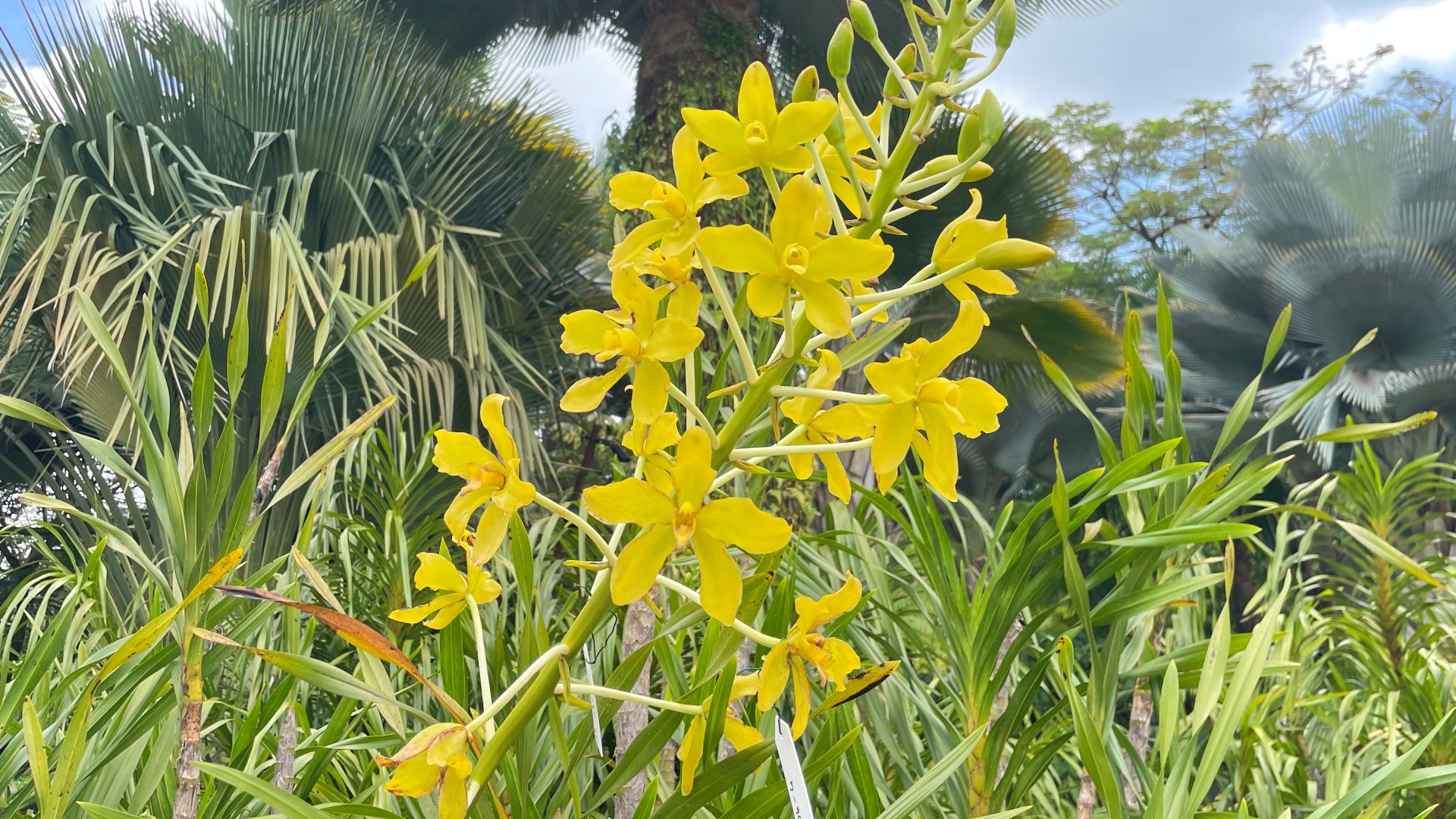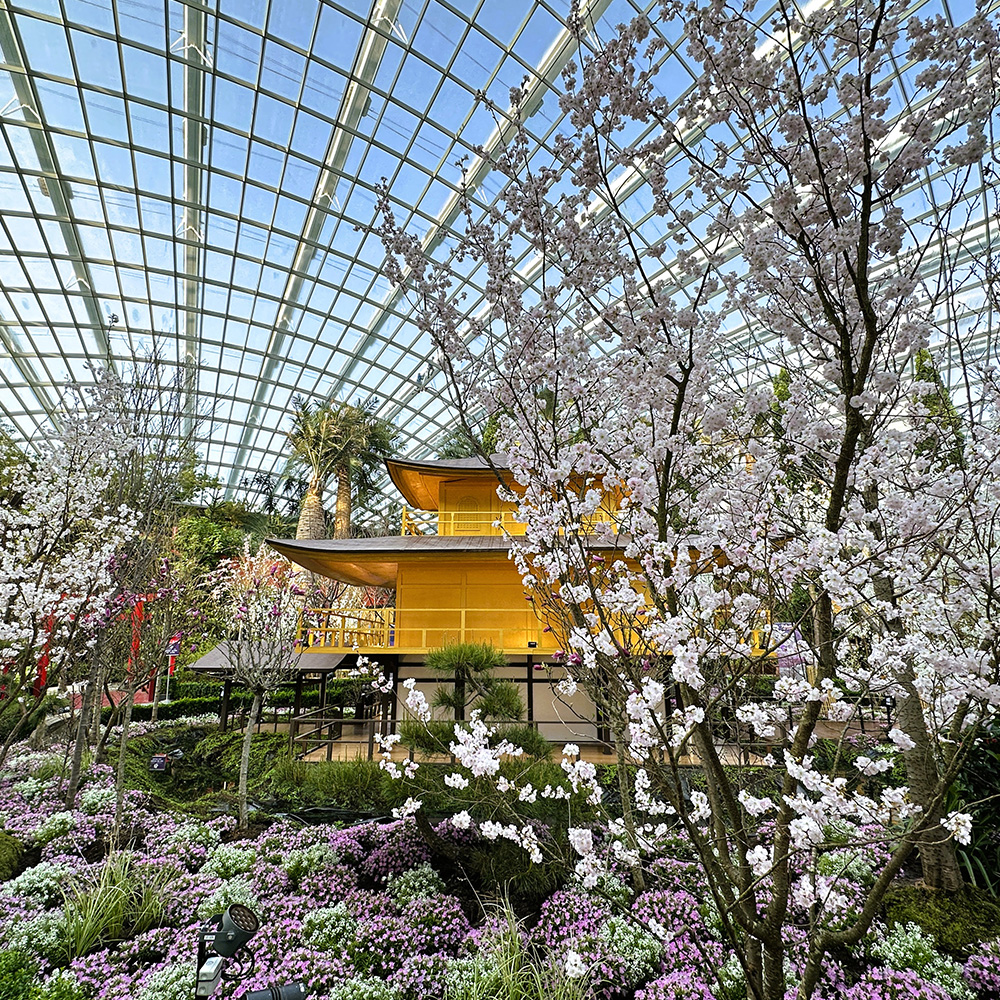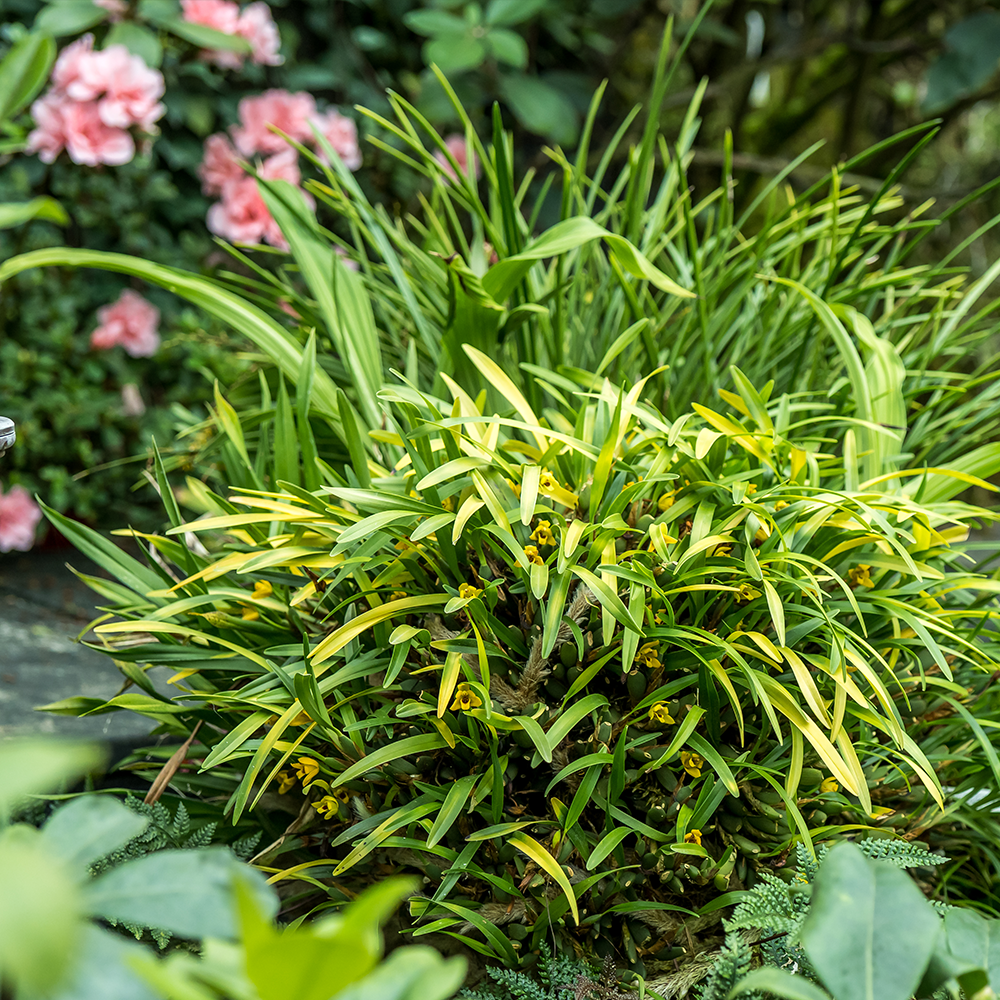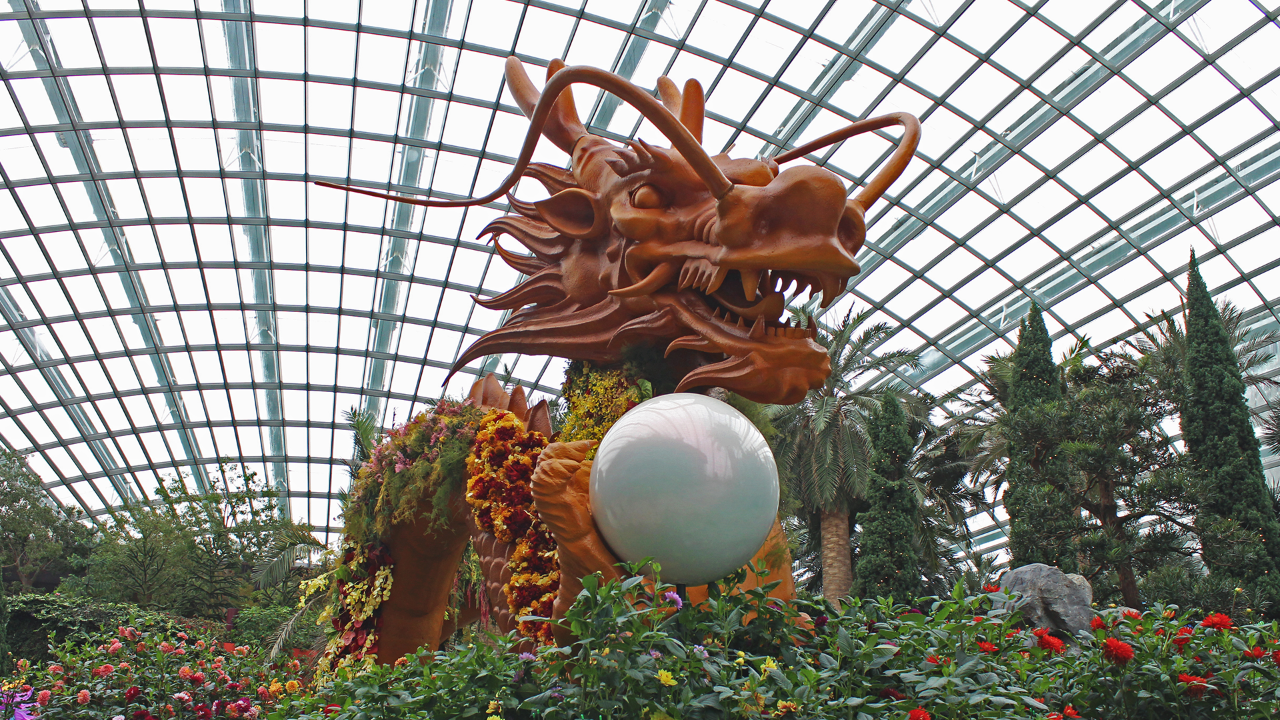 Starting off the 2024 floral displays, Dahlia Dreams is back to usher in the Year of the Wood Dragon with over 1000 dahlias of 40 different cultivars and hybrids, grown in-house by our horticulturists!
Starting off the 2024 floral displays, Dahlia Dreams is back to usher in the Year of the Wood Dragon with over 1000 dahlias of 40 different cultivars and hybrids, grown in-house by our horticulturists!
Dahlias might not have any true traditional ties to the Lunar New Year but here in Gardens by the Bay, we have made them a name for them as a festive feature for the season!
Native to the uplands and mountains of Mexico and Central America, the genus Dahlia belongs to the aster family, or Asteraceae, with over 1,900 genera and more than 32,000 species. These include notable ornamentals such as daisies, sunflowers, marigolds, and chrysanthemums—the latter is also another festive plant of the Lunar New Year season symbolising longevity, wealth, and prosperity. A defining trait of this botanical family is that what appears to be a single ‘flower’ is actually a flowerhead composed of multiple tiny flowers called florets.
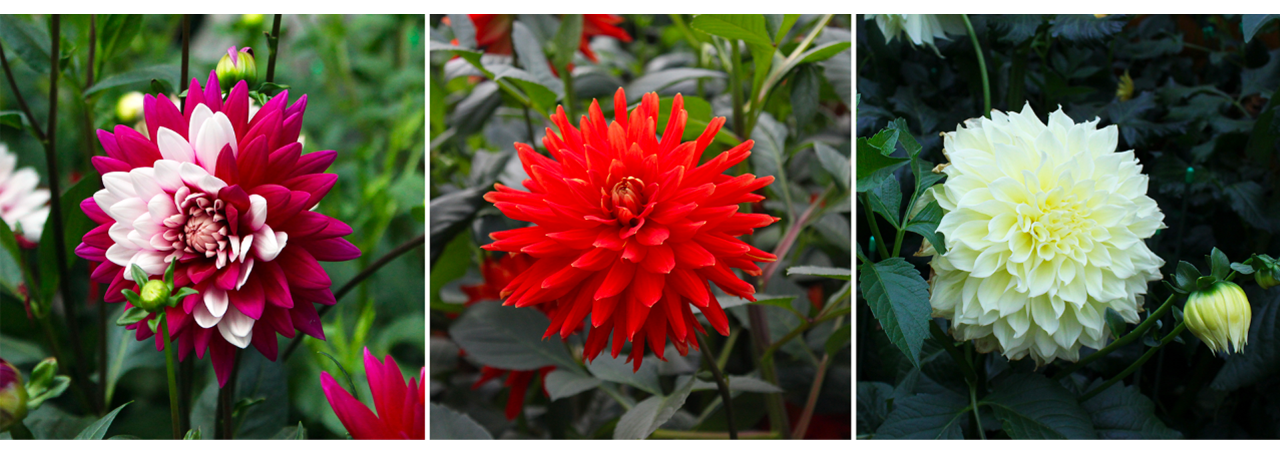 A selection of double-bloom dahlia cultivars — from left to right: ‘Rebecca’s World’, ‘Vulcan’, ‘Kelvin Floodlight’.
A selection of double-bloom dahlia cultivars — from left to right: ‘Rebecca’s World’, ‘Vulcan’, ‘Kelvin Floodlight’.
A fellow horticulturist colleague of mine described dahlias as “chrysanthemums on steroids”. Some cultivars have been bred for flower size and can produce extraordinarily large flowerheads with a diameter of 20 centimetres or more! These dahlias cultivars are often dubbed "dinnerplate dahlias" for their impressive size. One fine example is a returning favourite, D. ‘Kelvin Floodlight’ with its magnificent, yellow double blooms! Just like most cultivated chrysanthemums, flowerheads of double-bloomed cultivars are composed mostly of ray florets, each of which has a single petal-like projection. Double-bloom type cultivars have a vastly different appearance from the single-bloom dahlias that have a daisy-like appearance, with one or two outer whorls of ray florets surrounding a centre of disc florets.
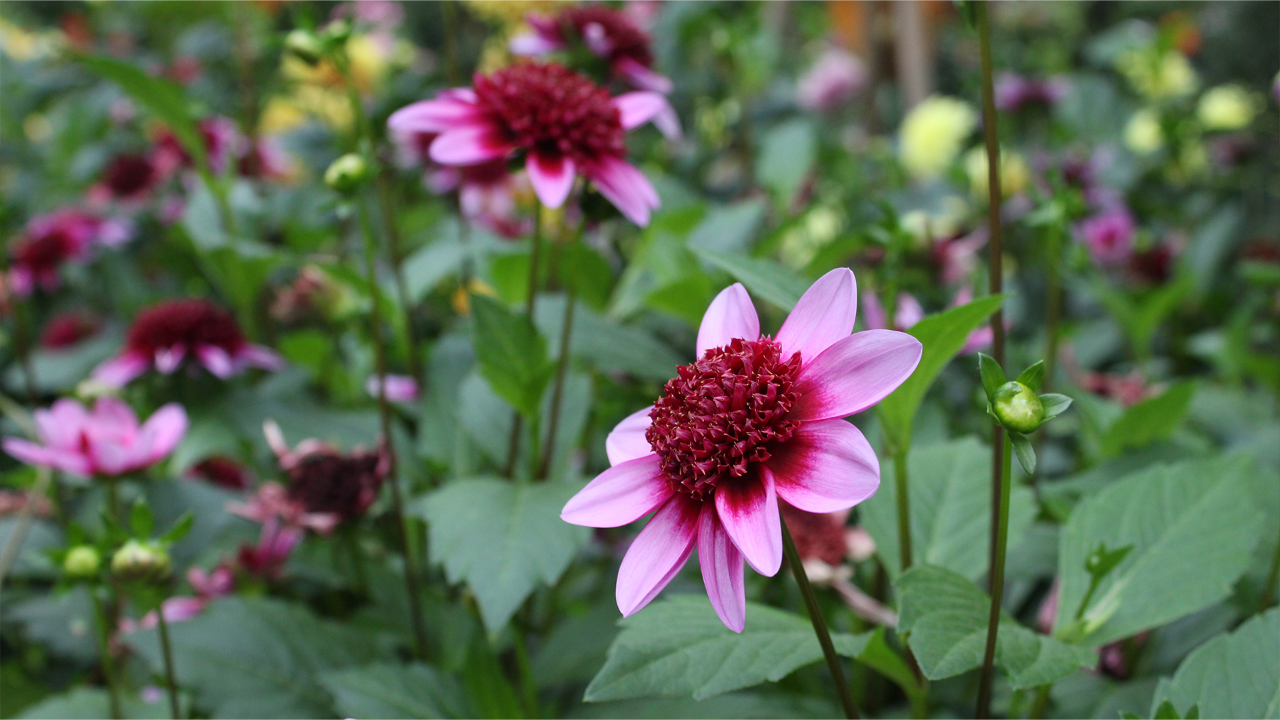 Dahlia ‘Blue Bayou’ — a representative of the anemone floral type.
Dahlia ‘Blue Bayou’ — a representative of the anemone floral type.
A personal favourite of mine this year would be Dahlia ‘Blue Bayou’. Having a thing for the atypical, I was drawn to its anemone floral type which resembles the single-bloom flowerhead of a wild dahlia species. The only difference is that anemone-flowered dahlias produce a central disc with elongated, tubular florets, forming a dome-like disc rather than a flat disc.
Speaking of anemone floral type, do you know that there are 14 different classification groups agreed on by the major national dahlia societies? Seven of these groups include double-bloom dahlias and representatives of many of the double-bloom classes can be found in this year’s display, including the semi-cactus, decorative, and waterlily floral types!
Despite the cultivar name, there is sadly no ‘blue’ in the flowers of ‘Blue Bayou’. Or in any Dahlia cultivars or hybrids. While dahlias readily produce anthocyanins (pigments responsible for red, purple, and black hues in plants), they lack a specific enzyme responsible for generating delphinidin, the pigment that gives true blue hues to flowers, such as those in the genera Viola and Delphinium. Thus, no blue-flowered dahlia has been bred yet.
Come down to Gardens by the Bay today and spot this cultivar and many others in this year’s Dahlia Dreams display in the Flower Dome!
Written by: Hazri Boey, Senior Horticulturist (Gardens Operations)
Hazri not only surrounds himself with plants at work; he has an abundant collection at home too! Having nurtured a keen interest in nature since young, he might have gone on to become a zookeeper caring for owls or sloths had it not been for his plant identification talent!
